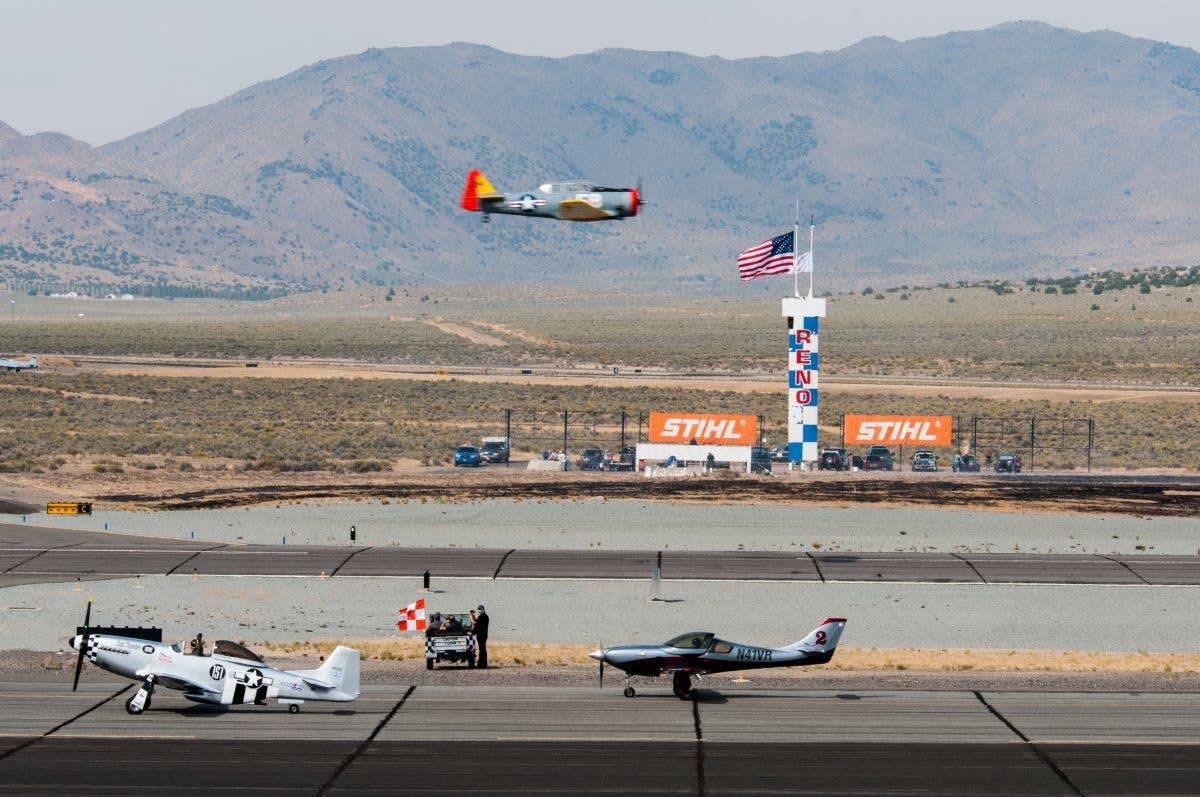Early Analysis of Fatal Reno Accident Offers Lessons
The airshow midair offers a sobering reminder that the pattern is no place to let down your guard.

In this photo taken in 2017, the Reno Air Race finish line is marked with the “Reno Column” in the background. [Credit: Shutterstock]
One of the first lessons a fledgling pilot learns is to keep your head on a swivel in places where aircraft congregate—such as the airport traffic pattern. The aviation world experienced a painful reminder of this Sunday with a midair collision of two North American Aviation T-6 Texans at the National Championship Air Races in Reno, Nevada.
The pilots, both from California, were identified as Chris Rushing of Thousand Oaks, flying Baron's Revenge, and Nick Macy of Tulelake, flying Six-Cat. Both Rushing and Macy were arguably two of the most skilled and experienced air race pilots in the world for the class.
The collision occurred after the race. Minutes before the accident, the pair had been competing in the last race of the Gold category. The races are run at 50 to 250 feet agl with engines consistently at full power and the aircraft flying nearly wing tip to wing tip.
The intensity of the competition takes a toll on both the pilots and aircraft, necessitating a cooldown period following the final flag. There is no set rule for how long the cooldown is or how many laps the aircraft must take, or the order in which they will return for landing. It is left to the discretion of the pilots since it is not a “follow-the-leader” situation.
As noted in the Aircraft Owners and Pilots Association’s Air Safety Institute (ASI) preliminary assessment of the accident, the collision happened when the aircraft were attempting to land on Runway 8 at Reno-Stead Airport (KRTS).
Richard McSpadden, senior vice president of ASI, noted that the collision occurred at approximately the base to final turn for the runway.
“It appears there are three potential factors that may have contributed to this accident: decreased vigilance departing the cooldown area, procedural errors in traffic deconfliction, and diminished visibility below the higher flying aircraft," McSpadden said. "We’ll look for the [National Transportation Safety Board report] to determine the cause.”
Because the race was over, the attention of the crowd was not so much on the T-6s, and a great many attendees reported seeing the aftermath of the collision as wreckage falling from the sky or clouds of dust rising from the desert floor. Others described hearing a collective gasp from the crowd followed by confusion and a stunned silence.
Both the FAA and NTSB are investigating the accident. The NTSB preliminary report is expected to be released in a few weeks.
The Takeaway
If anything can be drawn from this accident, it is that the pattern is no place to let down your guard. The combination of crowded airspace, inherent blind spots due to aircraft design, low altitude, and relatively slow speeds during a task-saturated phase of flight makes for a challenging environment.
This accident proves that experience and skill can only go so far—if it can happen to professionals, it can happen to us.

Sign-up for newsletters & special offers!
Get the latest FLYING stories & special offers delivered directly to your inbox






